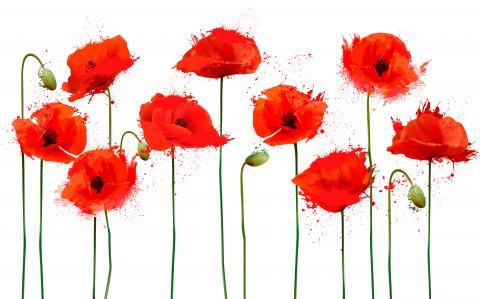
Getting your period can be a pretty wasteful event: A woman can easily go through a whole pack of pads once a month. Unfortunately, these go straight to the landfill. While a woman should never feel ashamed of her period, there are ways to curb waste during the menstrual cycle. Here's how to create a low waste menstrual cycle that will also help you save money while bettering your health.
Reusable Pads
My personal favorite: reusable pads are a great alternative to disposables. Not only are they much better for the environment, but they’re better for my health and wallet too. Think about this: Traditional pads are made from a mix of plastics, cotton, wood pulp and other synthetic fibers. Ew. If you’re thinking “but cotton is a safe material to use,” think again. According to the Rodale Institute, conventionally grown cotton uses 16 percent of the world’s pesticides. To make matters worse, the materials in pads are bleached with chlorine dioxide, which creates polluting (and harmful) bio-accumulative byproducts (like dioxin). And guess what? These enter the environment and your body, where they remain for decades! Is that what you want near such a sensitive area? Count me out.
There’s also the money aspect: Disposable pads would cost me $8 every month, not including tax. That amount adds up. By the end of the year, I was dishing out at least $96 on disposable pads, which is money I could’ve been saving. So far, I’ve been using my reusable pads for a full year and four months. They’ve saved me (at least) $128 and will continue to save me money since they’re still in great condition. If I keep them for five years, I’d be saving at least $480. Isn’t that incredible?
I will admit reusable pads can get a little pricey. You’re going to want a set of really good reusable pads to get you through the length of your period, which can cost around $80+. Just remember this is an investment that will literally pay for itself in the long run. I have at least two heavy duty overnight pads, six day pads and three light day pads. Look into getting something similar for yourself so you can stay comfortable throughout your period. Yes, you will have to wash and dry your pads but it is well worth it. You are diverting at least 24 pads from the landfill every month, if not more. That’s an accomplishment.
Period Underwear
If you love the idea of reusable pads but dread the work that comes with them, you might want to try period underwear. When you’re done using them, you can just put them in a washing machine and dry as you normally do. There are many companies that make period underwear and offer a wide range of options that include everything from bikini to boy shorts. They’re almost magical in a way, considering you don’t need anything else besides your underwear (though some people like to double it up with a reusable pad or menstrual cup for extra protection on really heavy days). I’ve never personally tried period underwear but I really want to. Many people have gushed over how amazing they are and that they are leak proof.
Menstrual Cups
Did you know the average woman will use up to 16,800 disposable tampons during her lifetime? That’s an insane amount of trash, discarded and headed straight to the landfill (and no, it won’t decompose). If you find yourself enjoying tampons, you should definitely consider making the switch to a menstrual cup. A menstrual cup is worn internally, much like a tampon, and sits low in the vaginal canal, collecting rather than absorbing your menstrual flow. It offers 12-hour leak-free protection, though some people like to wear a reusable pad too, just in case (especially when your flow is heavy). It can be used overnight too. Many companies offer two sizes to help you find your perfect fit.
Once the cup is full, you just empty it out, rinse it with water, and then reinsert it. If you’re in a public restroom and can’t do that, empty the contents into the toilet bowl then use some toilet paper to wipe the cup clean before reinsertion. You can wash it out better at a later time.
Please keep in mind there’s a bit of a learning curve with menstrual cups. It may take you some time to really get the hang of inserting them. Give yourself time and patience. Give them a try and quit disposable tampons all together.
Low waste ways to cope with period pain
In addition to switching to reusable products, there are some other low waste ways to deal with period pain. Here are my personal favorites:
- Drink raspberry leaf tea at least three times a day. You can buy it at the bulk food store in your own mason jar.
- Take a hot shower or place a heating pad on your abdomen.
- Reduce sugar intake, instead opting for a diet rich in calcium with foods such as yogurt, salmon, and fortified orange juice.
- If you suffer from moodiness, fatigue, or irritability, try drinking dandelion root tea.
- Can’t fall asleep while on your period? Bloated? Try drinking some chamomile tea.
- Drink more water! Making sure you’re hydrated can reduce so many symptoms that come with your menstrual cycle.
- Your hormones are responsible for a lot of things, including how you feel on your period. Make sure you eat a lot of hormone-balancing foods before and during your time of the month.
Need more low waste ways to combat PMS and cramps? Here are some natural ways to soothe PMS symptoms and herbal tea blends for menstrual relief.








